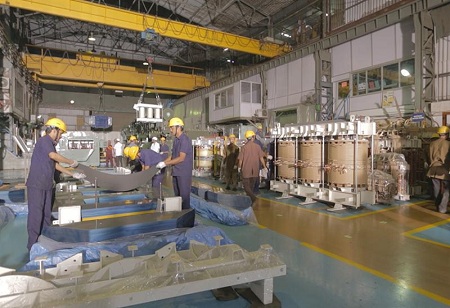India’s
manufacturing sector continued to build up at the end of 2020. This was achieved with the help of manufacturers since they increased the production in December last year. Moreover, the IHS Markit India Manufacturing Purchasing Managers’ Index was at 56.4 and according to a survey that was conducted in December between the 4th to 17th of the same year, factory orders increased reflecting the loosening of Covid-19 restrictions. This strengthened the demand and improved market conditions.
“The latest figure was consistent with a marked improvement in business conditions across the sector,” IHS Markit said in its monthly update on the country’s factory sector. “The latest PMI results for the Indian manufacturing sector continued to point to an economy on the mend, as a supportive demand environment and firms’ efforts to rebuild safety stocks underpinned another sharp rise in production,” said Pollyanna De Lima, Economics Associate Director at IHS Markit.
One of the states that have a large consumer base and also ranking high in the purchasing power index is Maharashtra. Maharashtra is not only one of the most industry-friendly states but it is also a state with the least labor strife. Manufacturing industries in this state and also Gujarat have an edge over other states in terms of resource availability within a reasonable distance.
Largest manufacturing hub
Maharashtra, a state that is located on the west coast of India shares its borders with multiple other states. What has made the state as the country’s largest manufacturing hub is the availability of a large talent pool and the favorable industrial policy. In addition to this, Maharashtra has a vibrant industrial corridor in cities such as Nashik, Pune, Konkan, Nagpur, Aurangabad, and Amravati.
Maharashtra is not only home to a majority of the top large corporates, but the State’s industrial policy favors small and medium enterprises (SMEs) as well and some of the specialized economic activities of the city are diamond cutting, computers, and movie making. The launch of the ‘Make in Maharashtra’ campaign is expected to attract foreign and domestic investment in the manufacturing sector.
As the capital city of Maharashtra and also one of India’s largest populated city, Mumbai generates 6.16 percent of the total GDP. Therefore it is the financial and commercial capital of the country. Mumbai – one of India’s dominant urban centers and also one of the largest and most densely populated cities in the world, was known as Bombay until 1995.
Mumbai is a great port city situated on the west coast of the Indian peninsula and the city was developed around a fort established by the British in the mid-17th century with an aim to protect their trading interests along India’s western coast. Mumbai’s natural harbor served as a focal point for sea routes crossing the Arabian Sea, thereby the city soon became the main western gateway to Britain’s expanding Indian empire.
Later in the 18th century, the city evolved and emerged as one of the centers of the manufacturing industry, and today, Mumbai is not only the capital of Maharashtra but is also India’s commercial, entertainment, and financial capital. Not just India, Mumbai is also one of the world’s top ten centers of commerce in terms of global financial flow.
Home to some of the country’s largest and wealthiest industrial conglomerates
Mumbai is home to a few of the country’s largest and wealthiest industrial conglomerates. Mumbai is not only home to important financial institutions and the corporate headquarters of numerous Indian companies or multinational corporations but it is also home to some of India’s premier scientific and nuclear institutes. Some of these include the Reserve Bank of India, the Mumbai Stock Exchange, and a variety of other major financial institutions. The government and service sectors also play a major role in the city’s economy. What is more significant about Mumbai is the business opportunities available in this city attracts migrants from all over India.
Though in the 1990s Mumbai had prominently figured as the hub of economic activity of India at present Mumbai’s Metropolitan Region is witnessing a reduction in its contribution to the country’s GDP. According to reports, recent estimates of the economy of the Mumbai Metropolitan Region was estimated to be USD 151 to USD 368 billion. This has made the city either the topmost or second-most productive metro area of India. Many of India’s conglomerates including L&T, SBI, LIC, Tata Group, Godrej and Reliance, and five of the Fortune Global 500 companies are Mumbai based companies.
Though once dominated by the cotton textile industry, Mumbai’s economic base is now diversified which includes petrochemicals, automobile manufacturing, metals, electronics, engineering, food processing, and a wide range of light manufacturing. However, textiles remain the most important industry even today.
 Magazine
Magazine
